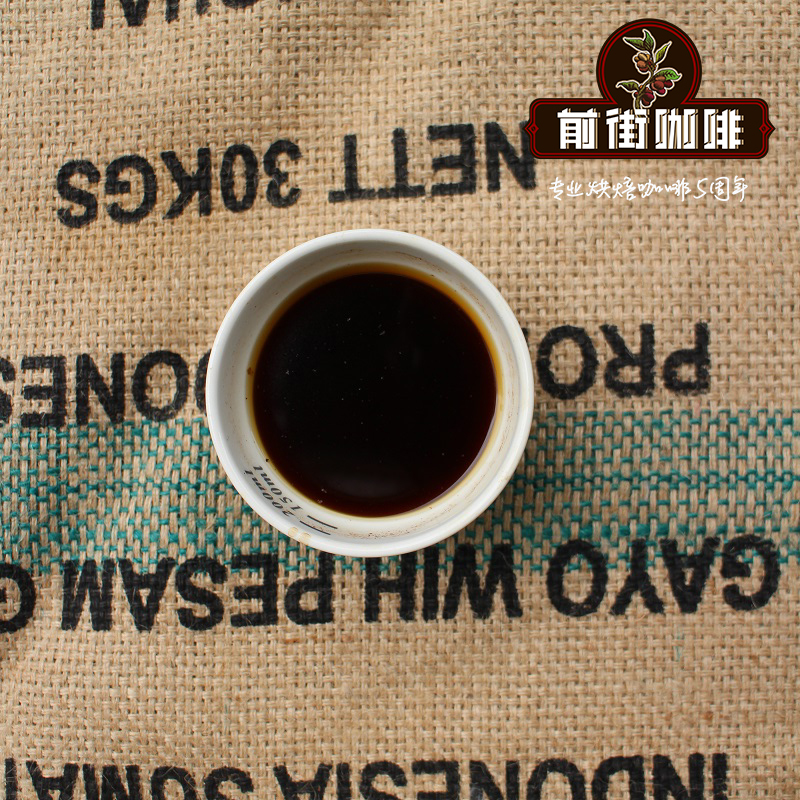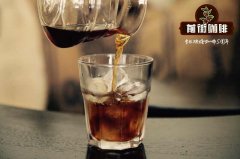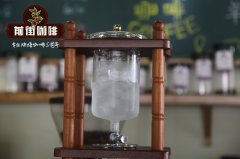Can mocha coffee be made by hand? what kind of coffee beans can be used by hand? how much coffee powder is used?

Professional coffee knowledge exchange more coffee bean information please follow the coffee workshop (Wechat official account cafe_style)
As a matter of fact, coffee is no longer an X artifact for young people in a small town and a necessary pick-me-up all night, it has been integrated into people's lives. More and more people are not only satisfied with their pastime at Starbucks or street corner cafes, but also choose to enjoy the local taste of coffee at home in the morning.
For many cute freshmen, the biggest threshold for the entry of coffee is not the origin, variety and flavor of coffee, but a variety of coffee utensils. What's the quickest to use? What is the lightest thing to take when you go out? What is the most challenging way to make coffee?
Today, let's take an inventory of several common coffee utensils.
French pressure kettle, short for French filter pressure kettle, was invented by two Frenchmen in the mid-19th century. At first, the filter pot was mainly used as a teapot, but it evolved into the now well-known version after it was improved by an Italian in 1929.
As a kind of immersion coffee pot, the French pressure pot has always been famous for its simplicity, convenience and stability. Soaking coffee powder directly in water ensures the consistency of coffee extraction to the greatest extent. therefore, the pressure pot is one of the most commonly used brewing methods in coffee evaluation.
Although a cup of coffee is finished by gently pressing the filter screen, the relatively large gap in the metal filter net of the French press pot is difficult to ensure the clarity and transparency of the coffee. The finished coffee often has small powder particles floating in it, and there will be a small amount of precipitation at the bottom of the final cup. Some people think it will enrich the taste of coffee, but others find it unpleasant to have a grainy throat. Therefore, to drink French coffee, it is best not to drink it in a hurry and leave the final precipitation at the bottom of the cup.
To make coffee in a French press, you need to use coarse ground coffee powder. Before the coffee is brewed and pressed down, remember to skim off the foam and floating powder with a spoon to prevent these suspended coffee particles from releasing too much bitterness. When you pour out the coffee, don't pour it greedily, and leave the muddy Fugen in the pot at last.
If you ask me what is the best coffee appliance to use, I will not hesitate to tell you a name-Philharmonic pressure Aeropress.
After being crazy about Amway by a British friend, I fell in love with it unexpectedly. This kind of coffee utensils, which are shaped like needles, are cheap and lightweight, but they are quite unusual. It combines the characteristics of concentration, trickling filtration and French pressure pot, but it makes it easy for anyone to make a good cup of coffee.
Although it has only been invented for more than a decade, it has become a necessity for many people to travel at home. Unique cooking method, so that it has a variety of playability, can be positive and negative, can be filtered and compressed. Three young people living in Melbourne hold the World Philharmonic pressure Competition every year and publish the cooking methods of the top three on the website. Now, every quarter, more than 3000 baristas from more than 60 countries are invited to participate in the competition, which shows the love of Philharmonic pressure by overseas coffee lovers.
For the use of Philharmonic pressure, you can refer to the practice of 2017 Philharmonic pressure champion Paulina Miczka: install the piston, pour in 35g coarsely ground coffee powder, slowly pour 150g of water and stir continuously for 20 seconds; after a little soaking, install a filter to flip the Philharmonic pressure, slowly press out the coffee solution and mix with water.
Hand-brewing coffee has been used for a long time. At first, people mainly used flannelette to filter it. It was not until the invention of filter paper a hundred years ago that this method of cooking began to develop.
Hand-brewed coffee requires high skill, and any slight change in the amount of coffee powder, brewing time and grinding thickness will affect the flavor of the final product. For the same type of coffee, these variables must be fixed as much as possible every time they brew; if they brew coffee of different varieties and producing areas, they will all be overturned and readjusted. Therefore, it takes enough trial and practice to make a consistent cup of good coffee.
There are many genres of hand-made coffee, including one-size-fits-all flow, volcanic meteorite method, and Japanese master Gaoshan Liushui quite perceptive loose grip method. Although the new coffee prefers the crisp acidity and floral aroma of light roasting, many American and Japanese baristas still stick to the deeper baking degree. As for the preference of style, there is always a difference between the benevolent and the wise, and there is no difference between them.
With regard to hand flushing equipment, the fine pot is more or less the same, but the filter cup must be the V60 of Hario first. This filter cup can be said to be a must for baristas. The side flow is fast and the bottom opening is large. As long as the water filling speed is controlled, the coffee made is generally not bad.
In many western countries, almost every household uses a mocha coffee pot to make coffee.
This kind of coffee pot on the stove mainly uses high-pressure steam to pass through the coffee powder to extract high concentration coffee. However, because the brewing temperature and the ratio of powder to water are very high, the brewed coffee is very rich and bitter, and some fine flavors are difficult to show. However, if you like the rich and authentic Italian flavor, the mocha pot will be a good choice.
Although the principle of mocha coffee pot is similar to that of Italian concentrator, because the extraction time is much longer, the grinding degree of coffee is not recommended to be too fine to prevent bitterness from being extracted too much. You also need to be more careful when making coffee. I still have a brand on my hand. (crying face)
The wonderful alchemist-style brewing method makes siphon coffee more and more popular.
In fact, as early as the 1830s in Germany, siphon pot has been born. The siphon pot is divided into two parts: the lower pot is filled with water and the upper pot is filled with powder. When the water in the lower pot is heated, it will be pushed by steam down the glass tube to the upper pot. When the lower pot cools, the coffee brewed in the upper pot will be sucked back into the next pot. The whole brewing process is like a wonderful chemical performance.
However, looking good doesn't mean it's easy to use. Because the water temperature is high and the extraction time is difficult to control, it is actually very difficult to brew coffee in a siphon pot. In addition, the grinding thickness, mixing degree and heating time should also be finely controlled. For this cool way of cooking, it is recommended that new people should be careful to avoid it.
Cut, knock, knock, buzz.
This is not acting cute. Making coffee with a capsule coffee machine is really as simple as that.
Although Nestl é invented the capsule coffee machine as early as 40 years ago, it was not until the last decade that this simple and stylish coffee machine was really promoted to a coffee artifact. Nowadays, the capsule machine is almost always a must-have item in the office, hotel or living room.
In order to get a good cup of coffee, there are too many factors to take care of, including water temperature, water quantity, powder quantity, grinding degree and so on. The biggest advantage of capsule coffee is that it uses a unified standard to catch all these factors that affect the quality of coffee. You can always get a good cup of coffee no matter when and where you press it.
Of course, standardization also has its disadvantages-it is impossible to adjust the cooking method according to the flavor of different capsules. Although this defect is nothing compared to the extreme convenience of the capsule machine, it does block the connection between people and coffee through utensils. After all, experiencing the ever-changing local taste is the greatest pleasure of making coffee at home.
Having said so much, do you have any idea about the choice of coffee utensils?
Which do you like best, French pressure, Love pressure, hand punch, mocha coffee maker, siphon pot, or super convenient capsule machine? Welcome to leave a message below to let us know. There are more surprises in the message area.
Important Notice :
前街咖啡 FrontStreet Coffee has moved to new addredd:
FrontStreet Coffee Address: 315,Donghua East Road,GuangZhou
Tel:020 38364473
- Prev

The efficacy of mocha coffee how to make mocha coffee is healthier and better to drink coffee and milk.
Professional coffee knowledge exchange more coffee bean information please pay attention to the coffee workshop (Wechat official account cafe_style) slightly sweet with soft acidity, sweetness has its unique round ripe taste its unique sweet, sour, bitter taste is extremely elegant. Mocha coffee as one of the oldest coffee in the world, the long-standing mocha coffee has become synonymous with coffee, its unique chocolate.
- Next

What kind of cooking method is suitable for Huakui coffee beans? how does Huakui use V60 to grind powder? what's the ratio of coarse to fine powder?
For more information on coffee beans, please follow the Coffee Workshop (Wechat official account cafe_style) Sakui, located in Hambella, Humbera in GUJI, the largest coffee producing area in Ethiopia, and the administrative branch of Oromia. The west of Hambella is across the mountain from kochore, and the north and east of Gucci are related to the shakiso,Uraga,Kercha production of Guji.
Related
- Beginners will see the "Coffee pull flower" guide!
- What is the difference between ice blog purified milk and ordinary milk coffee?
- Why is the Philippines the largest producer of crops in Liberia?
- For coffee extraction, should the fine powder be retained?
- How does extracted espresso fill pressed powder? How much strength does it take to press the powder?
- How to make jasmine cold extract coffee? Is the jasmine + latte good?
- Will this little toy really make the coffee taste better? How does Lily Drip affect coffee extraction?
- Will the action of slapping the filter cup also affect coffee extraction?
- What's the difference between powder-to-water ratio and powder-to-liquid ratio?
- What is the Ethiopian local species? What does it have to do with Heirloom native species?

